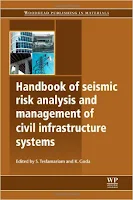The Mathematica Book
 Stephen Wolfram ... As both a highly readable tutorial and a definitive reference for over a
million Mathematica users worldwide, this book covers every aspect of
Mathematica. It is an essential resource for all users of Mathematica
from beginners to experts. This expanded fifth edition presents
Mathematica Version 5 for the first time and is important for anyone
interested in the progress of advanced computing. Included in this new edition are the following: Visual tour of key features + Practical tutorial introduction + Full descriptions of 1,200+ built-in functions + Thousands of illustrative examples + Easy-to-follow descriptive tables + Essays highlighting key concepts + Mathematica language tutorial + Guide to symbolic programming + Introduction to document-centered interfaces + Guide to the MathLink API + Notes on internal implementation + Index with 10,000+ entries.
Stephen Wolfram ... As both a highly readable tutorial and a definitive reference for over a
million Mathematica users worldwide, this book covers every aspect of
Mathematica. It is an essential resource for all users of Mathematica
from beginners to experts. This expanded fifth edition presents
Mathematica Version 5 for the first time and is important for anyone
interested in the progress of advanced computing. Included in this new edition are the following: Visual tour of key features + Practical tutorial introduction + Full descriptions of 1,200+ built-in functions + Thousands of illustrative examples + Easy-to-follow descriptive tables + Essays highlighting key concepts + Mathematica language tutorial + Guide to symbolic programming + Introduction to document-centered interfaces + Guide to the MathLink API + Notes on internal implementation + Index with 10,000+ entries.Info-Details: 1488 pages - Publisher: Wolfram Media; 5th edition (August, 2003) ... Language: English - ISBN-10: 1579550223 - ISBN-13: 978-1579550226 ...




